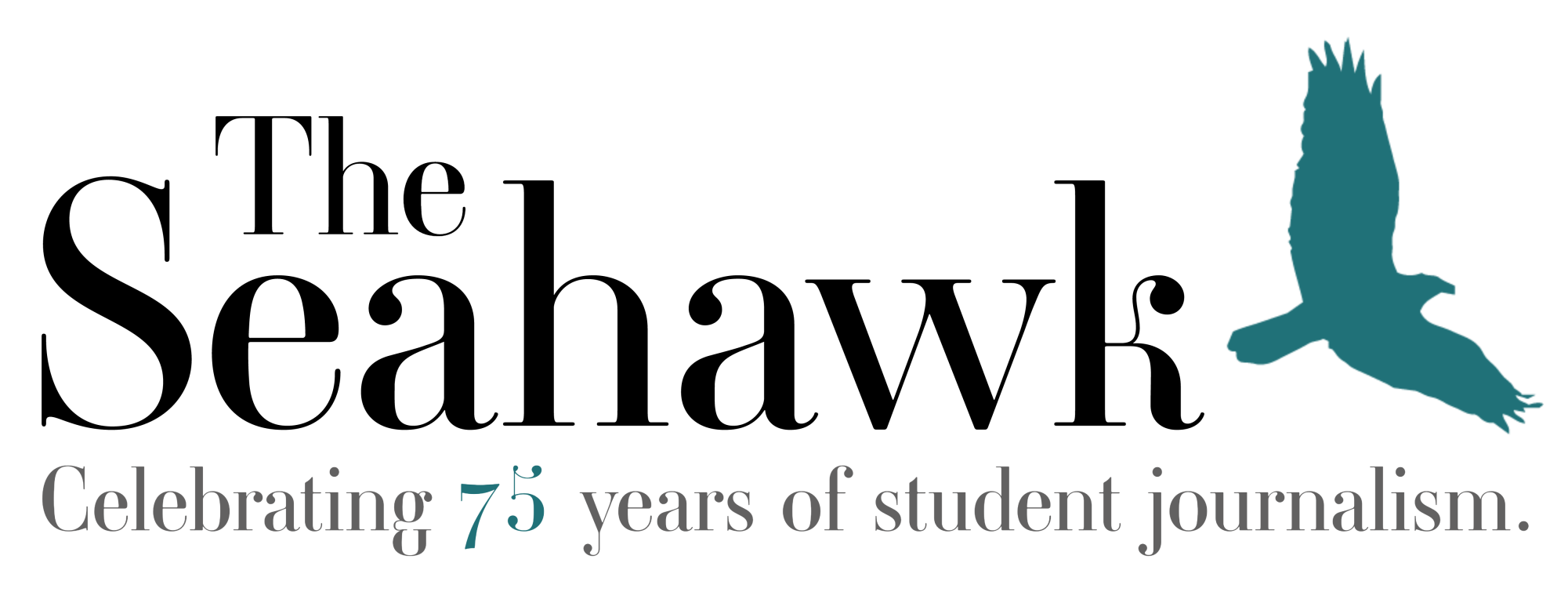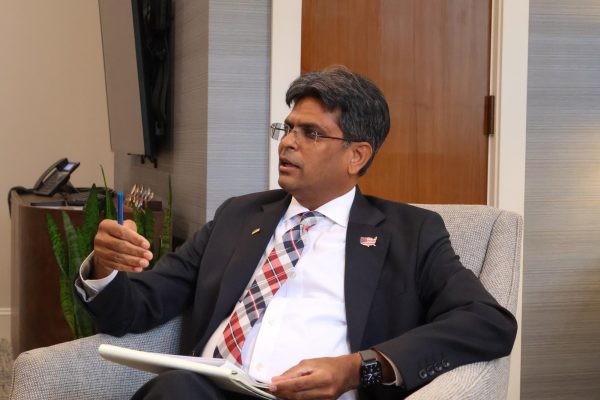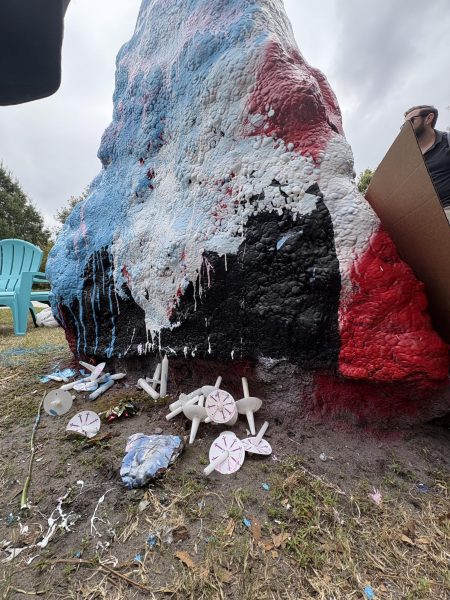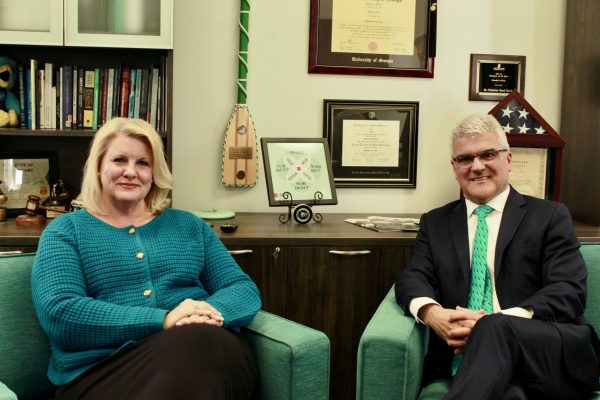An undersea pioneer speaks of ocean exploration
Aquarius, off the coast of Key Largo in Florida, is a 43-foot-long underwater laboratory operated by UNCW. Scientists and divers can conduct missions for up to ten days with Aquarius as an instrumental resource. The facility, aside from providing valuable means to study reef and ocean life, is used to train students, astronauts and Navy divers, as well as exhibit the most advanced undersea technology.
Bob Wicklund was key in Aquarius’ founding. He currently works with federal programs for the university and with UNCW students in aquaculture, microalgae feed stocks and reef restoration projects. On March 6, Wicklund spoke of his diving history, ocean explorations, discoveries and his new book “Eyes in the Sea: Adventures of an Undersea Pioneer.”
“I’m still about 50 years in the past,” said Wicklund as he displayed pictures of a lifetime of diving and ocean exploration on an old slide projector. In the early 60s, marine science was almost strictly explored in 2-D; scientists weren’t able to see the order of things beneath the surface.
After helping establish a rudimentary diving program in 1962 and spending time roaming around and learning a lot, Wicklund said he co-founded a hydrolab research program in Freeport, Bahamas in 1971.
For seven days, divers would live and work on the ocean floor in the 16-foot-long hydrolab, which is the predecessor to Aquarius. Wicklund and the other explorers would spend ten to 12 hours out researching the coral reefs each day. Wicklund excitedly showed slides of life inside the hydrolab, with the tiny shower and cramped bunks. He demonstrated how impressive Aquarius is in comparison.
“I wanted to chronicle the events and adventures that we had,” Wicklund said in regards to his new book. He wanted others to see the natural history and amazing life below the ocean surface. “Eyes in the Sea” also tells the story of a time when Wicklund’s colleague and friend nearly died while out on the reef.
From diving with Fidel Castro to spending time with Prince Charles in the underwater hydrolab to rediscovering a species thought to be extinct, Wicklund possesses an immense amount of sub aqua know-how, and “Eyes in the Sea” captures his ocean journeys over the last 50 years and his contributions to the marine science community.







